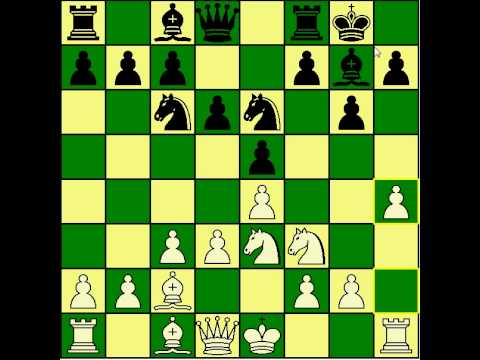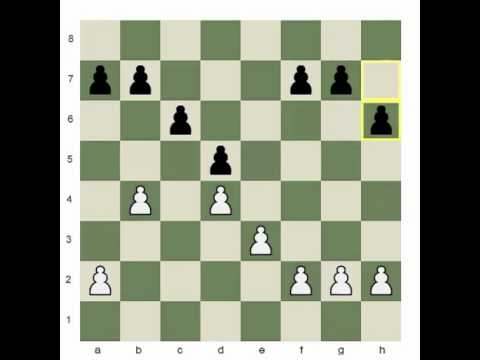Trending
Opinion: How will Project 2025 impact game developers?
The Heritage Foundation's manifesto for the possible next administration could do great harm to many, including large portions of the game development community.

Featured Blog | This community-written post highlights the best of what the game industry has to offer. Read more like it on the Game Developer Blogs or learn how to Submit Your Own Blog Post
As game designers, we invest a lot of effort into crafting elegant game mechanics & game dynamics. We take this essence of our game and teach the player how to participate in a world through the language of our systems. How can we design the metagame?

As game designers, we invest a lot of effort into crafting elegant game mechanics & game dynamics. We take this essence of our game and teach the player how to participate in a world through the language of our systems. Some games support a robust metagame, letting players surprise us with their invention of poetic expressions within the confines of the game mechanics.
These novel expressions usually come about from the most dedicated players who have gleaned an innate comprehension of the game's inner workings after repeated play -- all too often leaving less experienced or dedicated players behind, missing out on the full depth of the game's possibility space. I believe that "metagames" - the game played after the game dynamics are learned - can be designed. The rest of this article analyzes the metagame evolution in an ancient game whose metagame has unfolded over thousands of years.
At the crux of each game loop is the player's decision. In Chess, players make decisions by making moves designed to accomplish the capture of the enemy King while protecing their own.
Beginner Chess players often look to capture enemy pieces as quickly as possible. Unable to think multiple moves ahead, beginners make quick tactical decisions. The beginner find pleasure in applying their knowledge of piece movement with the overarching goal.
As their skill extends, the beginner realizes that piece movement can be applied defensively - in protecting pieces. By developing chains of overlapping coverage, the budding Chess player reinforces their decisions by ensuring a net loss for an attacking player.

There is a continuous building of tension with players of complimentary skills. Piece by piece stacks up, the entire board brimming with potential material destruction as players demonstrate their knowledge of the metagame by making the correct piece movement to avoid a catastrophe. Eventually, one player's knowledge meets its limits and the entire structure cascades down in a series of trades. Building and releasing this tension is an exciting aspect of intermediate Chess.
As players grow in their skill, they learn that what they thought were weak, even insignificant pieces are a valuable part of their toolset. By learning how to stagger their pawn structure, players create a backbone of defense. A successful attack against a skilled player hinges less on positioning of the powerful pieces and more on breaking the opponent's pawn structure.
Pawn structure is related to the above decision making, but instead of ramping up attackers for one big trade, pawn structure is a passive arrangement. Chess supports both offensive & defensive branches in the metagame, allowing players to develop multiple skills simultaneously or specialize without being obstructed from improvement because they failed to master one specific technique, as is common in many commercial games.

Beginner players are introduced to the powerful rook piece which can move in sweeping motions across the board. However, Chess over its extensive iterative design has placed these rooks in the back corners of the board - the most inconvenient location possible when a core of gameplay revolves around controlling the center.
As player skill deepens, games last further and further in number of turns. With the turn count increasing, potential material destruction rises and becomes actual material destruction. Pieces are destroyed, leaving space for the rooks to develop.
The final phase of the metagame is mastery of the endgame: mastery of the rooks in conjunction with the surviving pieces to capture the King. Unique strategies & tactical cruxes mark the endgame. Instead of requiring skilled players to repeatedly demonstrate their ability by using a larger chess board with ever-raised stakes (the Chess equivilant of "grinding"), players enjoy emergent gameplay from within the boundary of Chess rules.
Not all games are designed to last for ages like Chess. But despite its unintuitive nature, what can designers learn about designing metagames from Chess?
Each phase of the metagame game is enjoyable. Each phase leads naturally into the next one. Multiple branches of skill depth exist, allowing players to express themselves with unique styles. Advancement is not limited to perfecting a single technique (like a headshot in FPS) but rather the conglomeration of development.
Hidden depth exists with pawn structure & the endgame. But instead of being limited to players who spend hours finding a specific secret, players discover these aspects of the metagame by naturally exploring the possibility space of their current skill.
Game designers can keep these lessons in mind as they develop their next games -- possibly one will invent another game that will evolve for ages.
Read more about:
Featured BlogsYou May Also Like